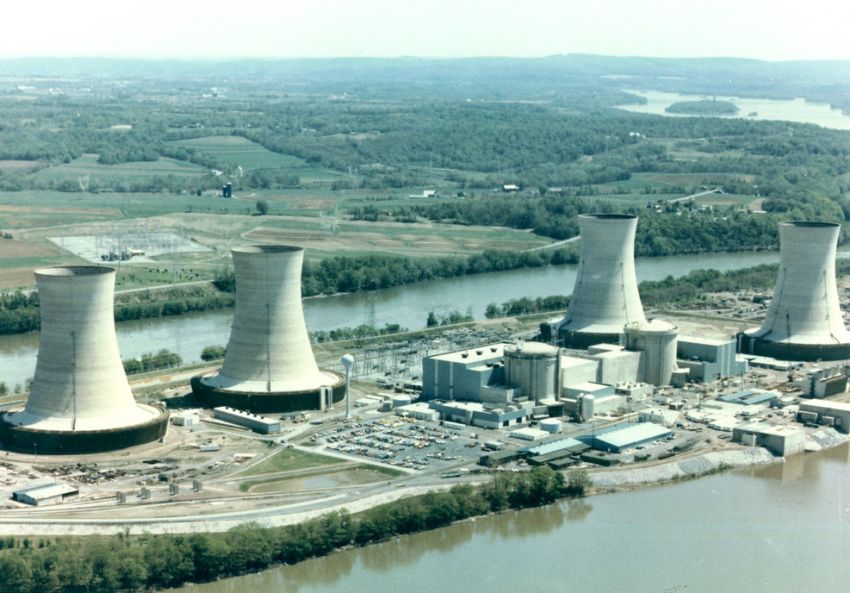
Meltdown: Three Mile Island
Directed by Kief Davidson
Now showing on Netflix
In a piece of dark humour, The Simpsons episode “King-size Homer” has Springfield nuclear power owner Mr Burns congratulating Homer Simpson for narrowly averting a meltdown by stating: “Homer, your bravery and quick thinking have turned a potential Chernobyl into a mere Three Mile Island. Bravo.”
In his Netflix documentary series Meltdown: Three Mile Island, Academy award-nominated director Kief Davidson shows just how close the 1979 accident at the Three Mile Island (TMI) nuclear power plant, located on a strip of land in central Pennsylvania’s Susquehanna River, came to being a calamity on the scale of the 1986 Chernobyl disaster.
With The China Syndrome still in the cinemas, starring Jane Fonda as a television reporter investigating cover-ups at a nuclear power plant, it was just after 4am on March 28 that the nuclear core heated to dangerously high levels due to a technical malfunction compounded by human error.
In the five days immediately after the accident, the company who ran the plant, Metropolitan Edison, tried to downplay the risk of radioactive releases. But panic ensued: more than 100,000 people fled the surrounding area.
Two days after the accident, an explosive bubble of hydrogen gas was found in the reactor.
Eventually disaster was averted as plant technicians were able to slowly bleed the gas from the cooling reactor, avoiding a deadly explosion. However, this was not the end of the story.
The actions of the Nuclear Regulatory Commission (NRC), Metropolitan Edison and the Bechtel corporation, which was tasked with the clean-up, left locals disillusioned and furious. Among those spurred into activism were Joyce Corradi and Paula Kinney, who mobilised at town hall meetings to demand the plant be shut down.
The second half of Meltdown focuses on Rick Parks, a clean-up supervisor turned whistleblower, who exposed cover-ups in the lead up to the lifting of an exposed reactor core in 1983.
Parks was disturbed at the amount of cost-cutting by Bechtel — easily comparable to the negligence and incompetence displayed by Mr Burns at the fictional Springfield plant — and the cover-ups by the NRC.
Particularly worrying to Parks was the hastily repaired polar-crane used in a rushed attempt to lift the reactor core. Had the operation gone wrong, it could have caused a meltdown that would have led to thousands of deaths and made the entire east coast of the US uninhabitable.
Along with mounting public opposition, his disclosures caused the NRC to halt, and then overhaul, the clean-up process at Three Mile Island.
Parks suffered greatly for his actions. When he tried to take his concerns to higher-ups at the NRC and the General Public Utilities (GPU), who had hired Bechtel to do the clean-up, he and his family were subjected to threats. Marijuana was placed in his car on the day of a random drug inspection and someone later broke into his apartment.
Despite this, Parks’ action ensured that the damaged crane was not used and that a second potential disaster was averted.
Metropolitan Edison was indicted on criminal charges of falsifying safety reports before the accident in 1983. Despite this, the NRC approved the reopening of the TMI facility in 1985.
To this day, the US government maintains that the amount of radiation released at TMI was not dangerous to humans and that the official death toll is zero. But local residents dispute this claim, citing a 1997 study by epidemiologist Steven Wing that found cancer rates two-to-three times the average in areas downwind of the facility.
In 2017, researchers at Penn State College of Medicine found that a certain type of thyroid cancer had become prevalent in people who had been near the plant after the accident.
Despite TMI re-opening, only two more nuclear power plants have been commissioned in the US since. The TMI facility was eventually shut down in 2019.
Parks still believes the nuclear power can be used as solution to energy needs, but maintains that “we’ll never have a viable nuclear industry in this country until we take the profit motive out of it”.
The industry, whose interests Parks went against, continues to claim that nuclear power is a viable solution to the climate crisis. However, the horrific consequences of disasters such as those at Chernobyl and, more recently, Fukushima, Japan, are a damning indictment on an industry that continues to put human life and the planet at risk for the sake of corporate profits.